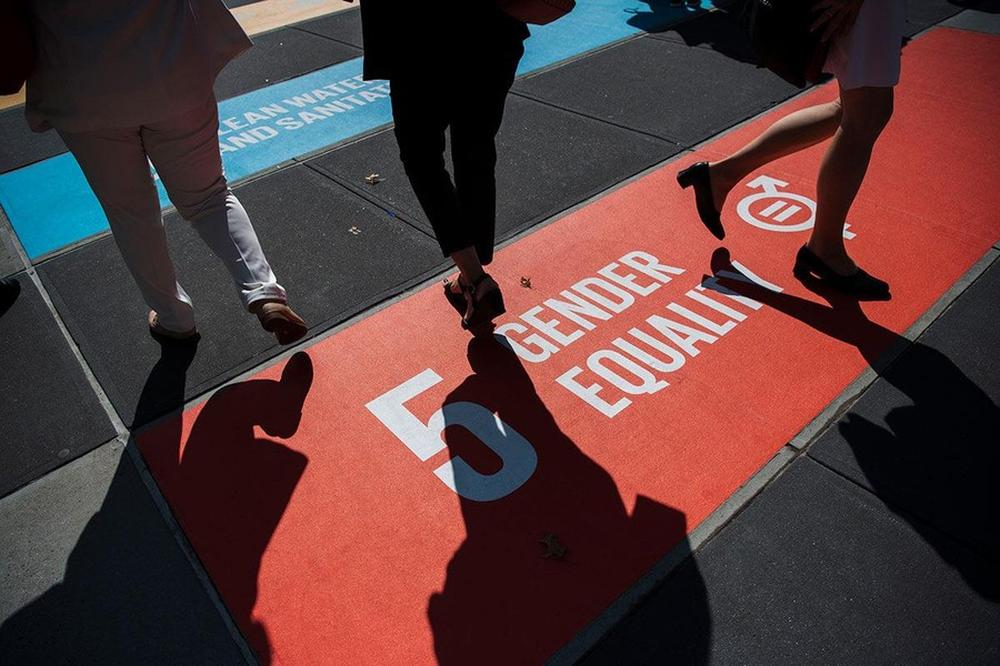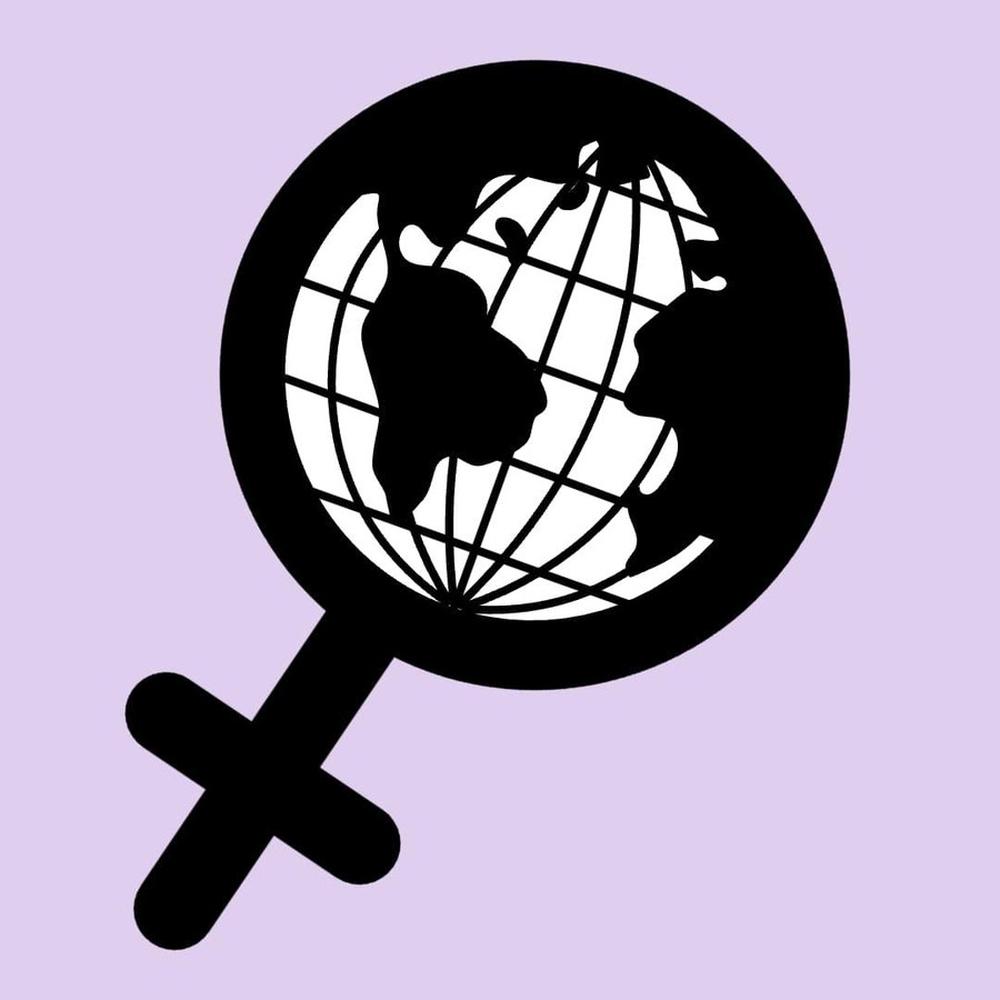- #Global Issues
- #Multilateral Relations
- #US Foreign Policy

► In response to challenges such as heightened gender-based violence during the pandemic and climate change, gender equality is integral to the 2030 Sustainable Development Goals, evolving discourse on gender and development.
► The gender and development discourse transitioned from the Women in Development (WID) approach to the Gender and Development (GAD) approach, progressing to intersectionality and gender-transformative approaches. This is evident in the prioritization of gender equality in platforms like the G7 and G20.
► In 2023, the US, Germany, and the UK introduced feminist foreign policies through internalization of gender discourse, integration of development agendas, and commitment to ambitious gender-sensitive ODA targets.
► In response, Korea should i) enhance gender perspectives in diplomatic activities, ii) foster partnerships with like-minded donors, and iii) invest in internal capacity building for advanced gender-sensitive Official Development Assistance (ODA).
I. Why gender matters in development
In September 2015, heads of state gathered at the United Nations and adopted the Sustainable Development Goals (SDGs) that will guide global development endeavors until 2030. Gender equality is crucial in reaching the SDGs and is included as both a stand-alone goal as SDG 5 and a cross-cutting issue that drives the achievement of the other goals. However, despite global efforts, women and girls are still denied rights and opportunities and a series of crises from the pandemic to climate change has reversed much progress made. For instance, the United Nations (UN) reported that the pandemic has intensified gender-based violence against women, threatened global progress against child marriage, and put an additional burden on women’s unpaid and care work.
As a response, several countries launched a feminist foreign policy that applies a gender-sensitive approach to their external actions, including international development assistance. In 2023 alone, Germany, the United Kingdom (UK), and the United States (US) published their respective strategy to advance gender equality worldwide, referring to it as a moral and strategic imperative. Such commitment is not new. The normative discourse on gender and development has gradually evolved over the last 60 years and so has the global discussion at key international organizations. Thus, feminist foreign policy on international development assistance can be understood to reflect such changes in gender and development discourse.
II. Gender and development discourse
Gender and development discourse shifted from a) a women-centered approach to changing the social structure and norm on gender, and b) treating women as a homogenous group to recognizing diversity among women.
In the 1970s, the Women in Development (WID) approach emerged. Recognizing women’s contribution to economic growth, this approach aimed to integrate women in the development process. This approach had a powerful influence on developed countries, or donors’, overseas development assistance, with donors adopting policies that reflect the WID approach. A notable example was the US passing the Percy Amendment to the US Foreign Assistance Act in 1973, which required its foreign aid agency, i.e. USAID, to include women in development programs. However, this approach was criticized for failing to challenge the unequal gender norms in the dominant development model and merely regarding women as passive recipients of development programs. In response to the limitations of the WID approach, the Women and Development (WAD) approach emerged in the mid-1970s. This approach emphasized that women have always been an integral part of development in both public and private spheres, and called for stand-alone women-centric development projects.
The 1980s saw a shift from the WID and WAD approach to the Gender and Development (GAD) approach. As the name suggests, the GAD approach signaled a shift of focus from women to gender power structure. Recognizing that development can have a different impact on women due to unequal relationships between the sexes, the GAD approach aimed to change gender relations while recognizing the diversity within women. Thus, it called for integration of gender perspective in all development interventions and processes at all levels, from design, and implementation to monitoring and evaluation. This was also reflected in the Beijing Platform for Action adopted at the Fourth World Conference on Women in 1995. Specifically, this outcome document emphasized the twin-track approach of mainstreaming gender at all stages and the implementation of women-targeted interventions to promote gender equality.
Afterward, the intersectionality approach and gender-transformative approach have been pursued in development. The intersectionality approach focuses on multiple intersecting forms of discrimination. For instance, two women in the same developing country may face different experiences and inequality due to race, ethnicity, age, disability, religion, and other social, economic, and cultural factors. This approach helps to understand how different forms of discrimination interact with gender and exacerbate inequality. The gender-transformative approach addresses the causes of gender inequality, such as discriminatory laws, unequal social norms and practices, gender roles and stereotypes arising from patriarchy, etc.
It is important to note that the normative discourse on gender and development has been reflected in global discussions, from the G7 and G20 to the UN and OECD Development Assistance Committee (DAC). For instance, UN Secretary-General António Guterres published the “Our Common Agenda” report in 2022 and presented a blueprint for the international community to reach the SDGs by 2030. Included in the 12 commitments was placing women and girls at the center. In 2023, the UN further institutionalized gender mainstreaming by adopting the resolution that mandated the UN system to mainstream gender at the UN Economic and Social Council (ECOSOC). The OECD DAC, of which 32 major donor countries including Korea are members, has published a series of guidelines that urged development assistance providers to better incorporate gender in aid programs. The latest document includes the “Gender Equality and Empowerment of Women and Girls: DAC Guidance for Development Partners” published in 2022.
Gender equality is becoming more of a priority in minilateral platforms, such as the G7 and G20. The 2023 G7 Hiroshima Leaders’ Communiqué mentions accelerating the implementation of SDGs in a gender-transformative manner and upholding the shared values of gender equality. In addition, a stand-alone factsheet on promoting gender mainstreaming through the nexus approach was published. Furthermore, G7 members’ contribution of official development assistance (ODA) for gender equality is included in the G7 Dashboard on Gender Gaps, the mechanism that monitors G7 commitments to gender equality. In the case of G20, sustainable development through gender equality and women’s empowerment was chosen as one of the three key transformative transition areas that the G20 will allocate its efforts to achieve the SDGs.
III. Feminist foreign policy and international development cooperation: cases of the US, Germany and the UK
As commitments and strategies at the global level have improved to better reflect the gender and development discourse, so have some countries’ foreign policies. This section will briefly review the three countries that published their respective foreign policies for gender equality and women’s empowerment in 2023, i.e. the US, Germany, and the UK, in which development assistance is mentioned as a key instrument.
In January 2023, the US Department of State launched the “Strategy on Global Women’s Economic Security.” As the interagency strategy, it provides a roadmap for all US government departments and agencies to realize women’s economic security worldwide. To monitor the implementation, the White House Gender Policy Council will publish a single, consolidated report annually. In linkage with this strategy, USAID developed its own “2023 Gender Equality and Women’s Empowerment Policy”. Next, Germany published the “Shaping Feminist Foreign Policy” and “Feminist Development Policy” respectively. Both strategies are based on the principles of the 3Rs: resource, rights, and representation. While the feminist foreign policy covers various issues from development cooperation, and climate diplomacy to cultural diplomacy, the feminist development policy specifically focuses on Germany’s bilateral and multilateral overseas development assistance. In the process of implementation, ministries in charge of the two policies have highlighted partnerships with other government ministries. In March 2023, the UK Foreign, Commonwealth and Development Office (FCDO) published the “International Women and Girls Strategy 2023-2030”. Centering around the priority themes of education, empowerment, and ending gender-based violence, FCDO also mentions close collaboration with other ministries in demonstrating the UK’s contribution to the women, peace and security (WPS) agenda.
The key takeaways from a detailed comparison of the three countries’ feminist foreign policy, with a focus on international development cooperation are as follows. First, the strategies show the internalization of gender and development discourse. For instance, the US and Germany make explicit mention of adopting intersectional and gender-transformative approaches in carrying out their respective strategies. Vice versa, key development cooperation agendas are integrated into implementing the feminist foreign policies, such as local-led development, public-private partnership, and humanitarian-development-peace nexus. Second, the three donors’ diplomatic and development efforts to put their strategies into practice will occur at multiple platforms, from bilateral, and minilateral to multilateral. Three countries noted that in addition to bilateral development assistance, they will uphold gender equality and women’s human rights through engagement at minilateral meetings of the G7, G20, EU, and/or APEC, as well as at international organizations such as the UN, OECD and multilateral development banks. At the same time, they will cooperate with like-minded countries that share the value of human rights and gender equality while forming partnerships with the private sector. Third, these countries aim to exert leadership in promoting gender equality in both soft and hard, as well as traditional and non-traditional security areas. Traditionally, gender was mainly incorporated in development assistance to social development sectors, such as education, health, and reproductive health. However, strengthening gender-sensitive approaches in infrastructure, climate and energy, peace and security, trade and investment, and even arms control were mentioned.
Last but not least, concrete targets on gender-sensitive ODA were laid out to turn commitments into action. Germany’s feminist foreign policy highlights its aim of deploying 100% of humanitarian assistance in a gender-sensitive manner and the feminist development policy states that the Federal Ministry for Economic Cooperation and Development (BMZ) will aim to allocate 93% of newly committed project funding to projects and programs which promote gender equality. As for the UK, it’s committed to at least 80% of its bilateral aid programs having a focus on gender equality by 2030. Considering that the share of Germany and the UK’s gender equality-focused aid was an average of 45% and 69% in 2020-21, respectively, the goals are ambitious yet feasible. Simultaneously, the attainment of the said goals will be a testament to the countries’ commitments to gender equality in partner countries.
IV. Policy recommendations for Korea
It is without doubt that strengthening gender in foreign policy, in particular development cooperation, is crucial in upholding the shared value of human rights and gender equality. Contribution to enhancing gender equality is also in line with Korea’s foreign policy. For instance, Korea’s Indo-Pacific strategy states Korea’s commitment to strengthen rule-based international order based on the universal values of human rights and to promote the rights of women, children, and other vulnerable groups. The Strategic Plan for ODA under the Yoon Administration reiterates the government’s will to uphold common values, including the SDGs and human rights.
Within this context, first, Korea should enhance the integration of gender perspectives in various diplomatic activities that complement one another. The cases of the US, Germany, and the UK show that promoting gender mainstreaming is crucial not only in development cooperation but also in minilateral and multilateral diplomacy. Second, Korea should cooperate and partner with like-minded donors. For instance, it can expand partnerships with the US, France, the UK, and other countries to promote women, peace, and security agenda during its term as a non-permanent member of the UN Security Council. Third, Korea should strengthen its internal capacity. Implementing gender equality-focused ODA is not just about quantity but also quality. For Korea to implement effective and advanced gender-sensitive ODA, capacity building of development cooperation policymakers and practitioners, from both public and private spheres, is necessary. As the intersectionality approach suggests, Korea should equip itself with a combination of expertise from development cooperation, gender, local knowledge, sector, etc, to enhance the effectiveness and impact of its ODA.
